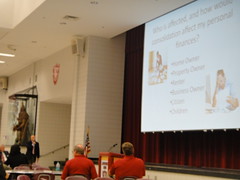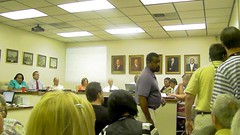He elaborated:You looking for people who look like you or are you looking for people to do a job?
If you pay enough, I’ll find you people to work. That’s a lie: you can’t find people to work in a business. That’s a lie.He talked about his experience with other schools and the local schools. About business development:
I use the school systems.He concluded:
If you live outside the city limits, call somebody in the city limits, and please, please vote no.
[Applause]
Here’s the video:
People who look like you or people to do a job? —Jerome Tucker @ LCBOE 4 Oct 2011
Why we oppose consolidation,
Community Forum, Lowndes County Board of Education (LCBOE),
Valdosta, Lowndes County, Georgia, 4 October 2011.
Videos by Gretchen Quarterman for LAKE, the Lowndes Area Knowledge Exchange.
-jsq









